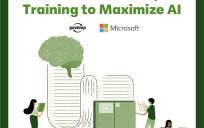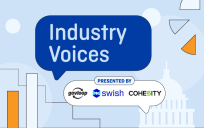
We’re live! Today, GovLoop is hosting its Second Annual State and Local Government Innovators Virtual Summit, an all-day, virtual event with six different online trainings, networking opportunities and resources to help state and local govies do their job better. You can register here and be sure to read the other recaps here.
Today’s public sector leaders are turning to data analytics to gain actionable intelligence that can improve outcomes for citizens. How are states increasing the effectiveness, efficiency, and transparency of state government? By dramatically simplifying and increasing the use of data across agencies.
Dave Fletcher, Chief Technology Officer for the State of Utah and John Roach, Director of Strategy at KSM Consulting, shared the necessary steps needed to break down data silos and work within and across agencies using performance management tools and strong analytics platforms to help government agencies improve services and move at the speed of business.
Big Data in Government and the State of Utah
Fletcher began the session with an overview of how many states, particularly the state of Utah, successfully harness big data. “State and local government are finding ways to enhance open data opportunities to increase service,” Fletcher said. “Because of the change in government and desire to do things differently, we now have more data than ever before.”
For Utah, data is coming in with higher velocity, variety, and volume. That’s why Utah has a statewide open expenditure system where every local government is required to provide data into a centralized data system. For example, every traffic signal in the state is connected to a central data system that is fed data every 10th of a second.
“Traditionally, we had silos, but with big data technologies, we have the opportunity to look at these datasets more holistically,” Fletcher said. The examples of silos he mentioned included data for environment, transportation, healthcare, and criminal justice. By slowly breaking down these silos, however, data is not just shared at the state level, but also the local level. “Now we have the opportunity to use big data and aggregate such data across these silos and disparate systems,” Fletcher added.
To improve the use of its big data, Utah uses the following techniques:
- Predictive Analytics
- Real-Time Transactions & Interactive Response
- Sensor Data Management
- Management Enhancing Visualizations
One of the best ways to harness big data is to host a state competition and harness talent within state and local communities. Last summer, Utah Geek Events and the local user groups came together to create a competition to improve and provide insights into Utah’s air quality. The competition was open to all technologists who wanted to learn more about big data.
By harnessing best practices, tackling the challenges of big data and security, and by developing partnerships with the community, Utah serves as an excellent state and local case study for other states and municipalities seeking to break down their data silos and improve big data use.
Breaking Down Data Silos to Build Smart Government
In the second portion of the session, John Roach from KSM Consulting provided examples for how to break down data silos to build smart government. Roach discussed how the company focuses on data analytics, business technology, and management consulting.
KSM Consulting provides nation leading advanced data analytics for the state of Indiana. Using combined data science and data architecture, the organization provides: assessment and planning; data architecture; and advanced predictive analysis.
For Indiana, its disconnected silos of data include tax, federal data, need-based programs, and the DMV. Roach stressed the idea that, instead of these silos, data should be used to improve service delivery and combat fraud, waste, and abuse.
“When people think about solutions to big data, a lot of people tend to think about technology first,” Roach said. “But technology’s not always necessarily the answer. It’s also important to consider governance, privacy, culture, transparency, value continuum, and data combination.”
In order to combine data, Roach suggested the following strategy: “Architect a scalable, flexible analytics platform that enables success on initial use case and meets future needs.”
To do so, it’s important to address how governments share data, whether through a governance framework or executive order from the state governor. Next, it’s important to focus on data quality, both in the short-term (data services, hard work, and quality resolution algorithms) and long-term (data stewards, organizational change, quality monitoring). Finally, identify what resources the state would use to combine data, whether it’s through employee training or partnerships within the community (i.e. university partnerships).
For other state and local entities seeking to combine their data for building smarter government, Roach concluded with the following tips:
- Data is your state’s largest untapped asset.
- Strategic use requires a cultural shift, technology, and skillsets.
- Use cases can span wide breaths of government function.
- Allow results to inform policy and programming.





Leave a Reply
You must be logged in to post a comment.